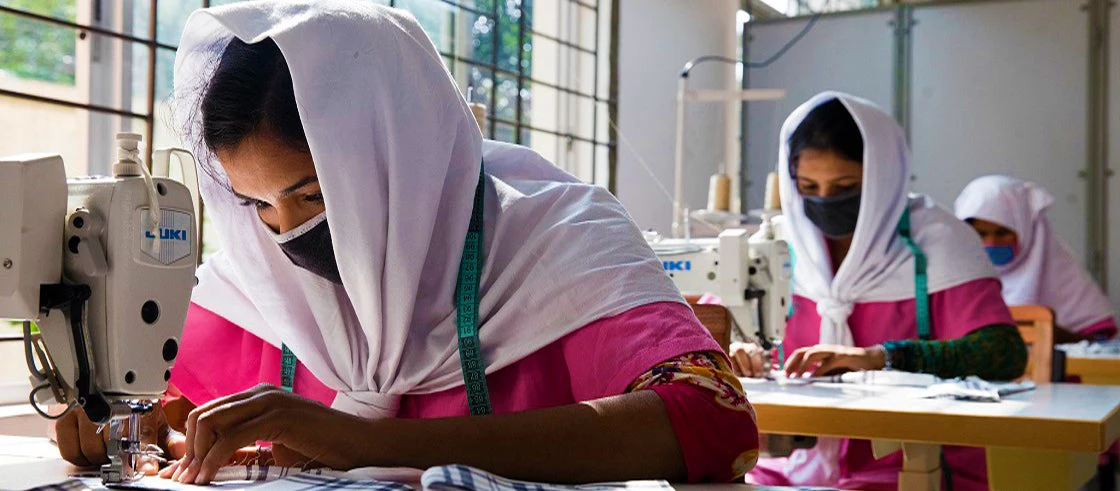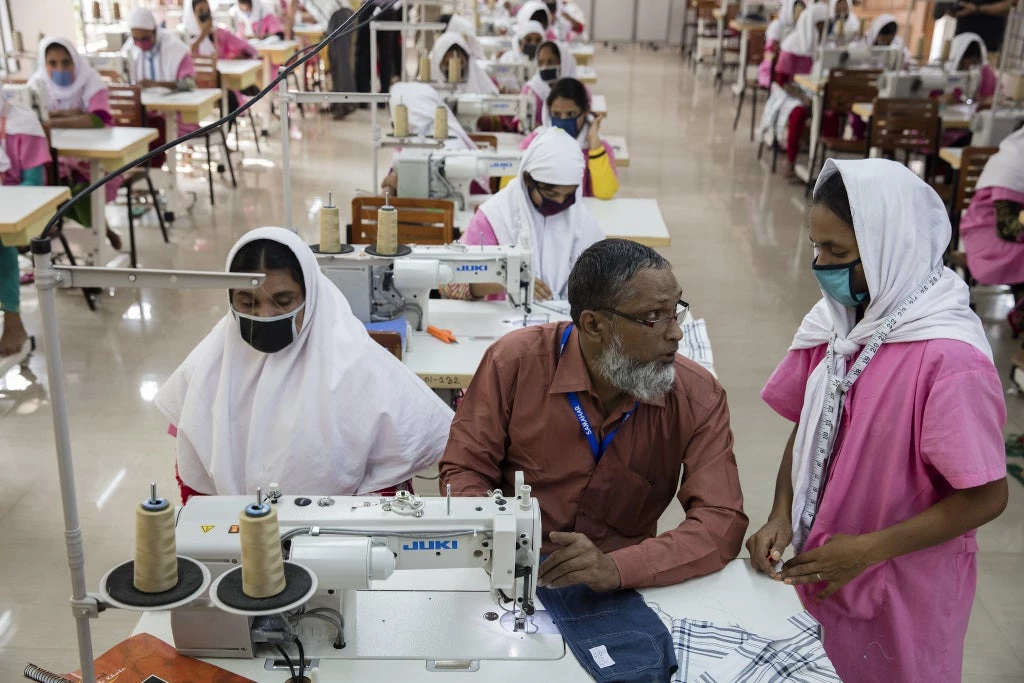 Young Bangladeshi women being trained at the Savar Export Processing Zone training center in Dhaka, Bangladesh. Photo: Dominic Chavez/World Bank
Young Bangladeshi women being trained at the Savar Export Processing Zone training center in Dhaka, Bangladesh. Photo: Dominic Chavez/World Bank
U.S. retail sales fell 8.7 percent in March 2020 due to the coronavirus (COVID-19), the largest decline since 1992. As retail stores close in the United States and Europe, the declining demand for garment products is affecting workers in developing countries. Feeling the loss of sales, buyers are canceling orders, in turn leading garment factories to halt operations.
This is concerning, as for young women and workers with limited skills and education, the apparel sector has provided an opportunity to transition into formal jobs with regular wages , which are now at risk amid shrinking demand for apparel exports. For Bangladesh, where export growth is highly concentrated within the ready-made garments sector (RMG), the impact can be felt more sharply than in economies with more diversified exports. Apparel represents 89 percent of the country’s total exports, and the manufacturing sector generated more than a quarter of net job creation between 2003 and 2016, according to the 2017 Job Diagnostic. The RMG sector was the main driver for the manufacturing job growth, particularly up to 2010, although its pace of job creation has subsequently slowed down.
For young women and workers with limited skills and education, the apparel sector has provided an opportunity to transition into formal jobs
Our new study estimates how changes in global demand for Bangladeshi exports would affect wages and informality rates for workers. We found that, in the short run, higher exports translate into rising wages and more people move from informal work to formal work in regions with greater exports. In the long run, more people throughout the economy benefit from higher wages and engage in a formal type of work.
Our results highlight the importance of greater exports for women. We observe that rising exports draw women out of informality and into the formal sector. In terms of wage gains, we found that since the garments industry employs a higher proportion of women than most other industries, greater garment exports reduced the wage gap between men and women, not just in the garment industry, but throughout the entire economy over the long run.
The findings of this report clearly show the benefits of exports for countries like Bangladesh. Our study covers periods of both rising and falling trade and is roughly symmetric. This suggests that our results for rising trade are also suitable for thinking about how the decrease in demand for exports will affect labor market outcomes.

Due to the coronavirus pandemic, the falling demand for apparel puts poor workers at risk. It will drive women either out of the labor force or back to informality and dramatically increase wage gaps between men and women. This could reverse the progress that has been achieved when the demand for the RMG sector was on the rise. The International Labour Organization (ILO) estimates that closing the gender wage gap is critical for development. Specifically, a 25 percent reduction in the gender wage gap in developing countries could increase global GDP by $5.8 trillion.
Global buyers such as H&M are agreeing to pay factories for current orders, and companies such as Marks and Spencer, Kiabi, and Target have assured exporters that they will accept ready-made garments that had already been produced and were in the process of being made. Actions by these leading buyers to follow through with payments will be critical to mitigating the impact of COVID-19 on apparel workers.
To deal broadly with the impacts of the pandemic on apparel workers, collective action by the government, international organizations, global buyers, and local factories is necessary
To deal broadly with the impacts of the pandemic on apparel workers, collective action by the government, international organizations, global buyers, and local factories is necessary. Recently, stakeholders including top apparel brands, employer organizations and unions joined the ILO in pushing for emergency funding to support garment factories and workers during the pandemic. Moreover, IFC has set up a public-private platform for stakeholders in the RMG sector to coordinate on post-COVID recovery. This includes virtual dialogues on immediate concerns, such as personal protective equipment manufacturing, as well as long-term planning on diversification of products and markets.
Moving forward, such initiatives will be essential in mitigating the impacts of this ongoing crisis on the garments sector, with a focus on protecting workers. Also, in the long run, the economy needs to continue diversifying and move up the global value chain within the sector.





Join the Conversation